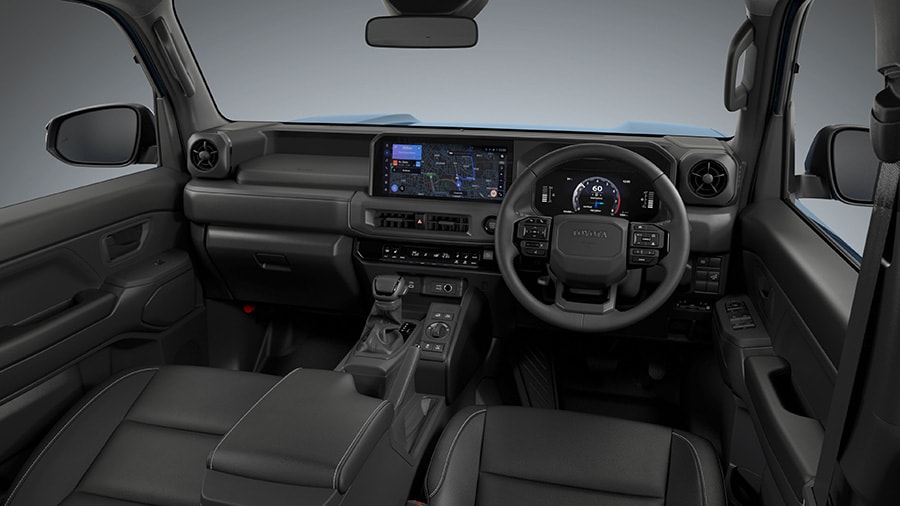Japan Mobility Show 2025: The Future of Mobility Revealed
Japan is a global leader in automotive innovation. It is the fifth-largest automotive market in the world, after China, the US, and India. In other words, the automotive sector is a key contributor to Japan’s economy.
Furthermore, Japan’s automotive industry accounts for 10% of the country’s GDP and employs over 5.5 million people. Beyond the numbers, its spirit lies in its continuous reinvention of mobility, exemplified by recent events like “Japan’s mobility auto show.”

It was not just a car show; it represented the future of technology, driven by human imagination and innovation. People gathered there to see incredible concepts from top brands such as Toyota, Honda, Mazda, Daihatsu, Lexus, and the new Century brand.
In this blog, we’ll explore some of the most talked-about concept cars from the Japan Mobility Show 2025, including:
- Toyota Century Concept
- Lexus LS Concept
- Lexus LS Micro EV Concept
- Toyota Land Cruiser FJ
- Toyota Corolla Concept
- Mazda Vision X Coupe
- Mazda Vision X Compact
- Honda Rocket
- Honda Super-One Prototype
- Mitsubishi Elevance Concept
- Daihatsu Midget
- Daihatsu Midget X
- Daihatsu K-Open
- Toyota Mobility ME Concepts
Toyota Century Concept

The Toyota Century Concept is one of the fantastic cars unveiled at the auto show, promising to compete directly with luxury brands like Rolls-Royce and Bentley.
In the words of the Chairman of the Board of Directors (Representative director of Toyota Motor Corporation), Akio Toyota, “The Century stands at the pinnacle, a car in the class of its own.”
Regarding the powertrain, the car will feature modern hybrid or electric technology. Additionally, each Century will be handcrafted with precision and detail, as evidenced by the phrase “60 layers of orange paint.” Each vehicle will be custom-built for its buyers.
Lexus LS Concept

The Lexus LS Concept is a long, spacious, and roomy vehicle with business-class seating as shown in the image below.

In other words, this car could represent the future of luxury sedans. The Japanese giant, Toyota, has reimagined this luxury sedan as a six-wheeled electric van concept.
However, it sparked controversy among Lexus fans. Many had expected something luxurious and elegant. Instead, they saw a six-door van with sliding doors, three rows of individual captain seats, and a futuristic design that appeals more than traditional SUVs like the Bentley Bentayga and Mercedes-Maybach GLS.
Toyota shared a conversation between two key figures — Akio Toyoda, the representative director of Toyota, and Takashi Watanabe, Lexus’s president and chief engineer — in which Watanabe proposed introducing a three-row BEV.
In response, Toyota made these interesting remarks:
“If we think of the LS as a BEV chauffeur car, it could become a new pillar of the Lexus brand in a new package that no one has ever thought of before.”
Lexus LS Micro EV Concept

This concept embodies the idea of “Lexus multi-stage luxury mobility.” This small electric pod is integrated into the rear of a large concept van. It’s a single-seater pod that can deploy from the back to cover short distances.
Toyota Land Cruiser FJ

The Toyota Land Cruiser FJ is another impressive prototype revealed at the Japan Mobility auto show in Tokyo. The company plans to launch this vehicle around mid-2026.
Its popularity is evidenced by its sales figures: over 190 countries have sold more than 12 million units on the roads. The car will appeal to enthusiasts seeking style, performance, and practicality all in one package.
The exterior features a rectangular, boxy design, with C-shaped headlights, wide fenders, and large bumpers, all of which give it a rugged, sturdy look. Owners can also customize the FJ Cruiser with round headlights, Molle panels, or other exterior add-ons to match their preferences.
The interior appears minimalist and straightforward, with a low dashboard, low beltline, and a low hood line, which can boost visibility and enhance driving comfort. The vehicle is expected to include advanced driver assistance features that can be useful during intense off-road adventures.

The wheel articulation is excellent, similar to the Legendary 70 Series, with a 270 mm shorter wheelbase than the 250 Series and metal structural bars beneath the body for improved stability and rigidity.
Let’s take a quick look at the spec table for the FJ Cruiser below.
| Specification | Detail |
| Length | 4,575 mm |
| Width | 1,855 mm |
| Height | 1,960 mm |
| Wheelbase | 2,580 mm |
| Seating Capacity | 5 (Two-row) |
| Engine | 2TR-FE 2.7L Gasoline |
| Transmission | 6-Speed Super ECT |
| Drive System | 4WD (Part-time) |
| Maximum Power | 120 kW (163 PS) |
| Maximum Torque | 246 N·m |
| Turning Radius | 5.5 m |
Toyota Corolla Concept

The new concept version of Corolla is sleek and stylish, something not expected from this car before. It has an elegant light bar across the front, just like the one we found in Tesla cars.
Regarding the specs, it will likely have an electric or hybrid powertrain, maybe the company’s new 1.5-liter hybrid engine. From Pakistan’s perspective, people usually buy it as a practical car for daily city commutes.
Now, Toyota is changing that image and turning it into something stylish and fun to drive. It hints at a new chapter for one of the best-selling cars in the world.
Mazda Vision X Coupe

Two concept vehicles presented at the Japan Auto Show are the Mazda Vision X Coupe and X Compact. Both highlight the brand’s approach to sustainability and AI-driven technology.
The X-coupe is a plug-in hybrid concept with a rotary engine serving as a range extender. The combination of engine and motor delivers about 510 hp. The electric motor offers a travel range of 100 miles, and the combination provides a reliable driving range of 500 miles.
The rotary engine was also used in the Mazda CX-30, but it couldn’t be sold in the US due to non compliance with local emission standards.
Regarding the exterior, the car features the “Kodo Design Language,” meaning “Soul of Motion,” with fluid, sculpted surfaces and flowing lines that convey motion, style, and grace.
This concept coupe will use sustainable technologies such as microalgae biofuel, in which algae absorb carbon dioxide CO2 from the air. Theyhas already made 1 liter of fuel from an 11,000-liter tank of algae in just two weeks.
Mazda Vision X Compact

Mazda Vision X Compact is a funky little crossover concept car that represents an AI-driven future and symbolizes how people will connect with their vehicles. The car will be expected to use AI to detect drivers’ moods, whether they are sad, happy, or tired.
It is developing a platform that will include larger digital displays and improved connectivity features. Mazda will also replace the Google Assistant with Gemini, a new Google voice assistant.
However, the company has not yet shared details on which models will receive these features. So, stick with us for getting more exciting updates!
Honda Micro EV Concept

It is one of the most affordable concept cars revealed at the 2025 Japan auto show. It is a tiny electric two-seater for short-distance travel. However, the company has no such plans for its production. It has a single bench seat integrated directly into its body, enhancing space and making the interior more comfortable —an essential consideration in small cars.
Inside, this Micro EV Concept has reliable storage under the seats for items like skateboards or personal mobility devices.

The car has a yoke steering wheel with a built-in space for carrying mobile phones. This phone is connected to the digital screen display across the dashboard and shows information about navigation direction, music info, and incoming call alerts.

Regarding the specs, it’s an EV with no specs or powertrain revealed at the moment.
Honda Rocket

The Japanese automaker, Honda, has also revealed a rocket this year at the Japan Mobility Show. The missile on the display is small, about 20 feet tall.
The rocket test was conducted in June and proved successful. The rocket reached an altitude of 900 feet ( about 274 meters). It remained in flight for about one minute and landed on the ground. The company also has a plan to reach suborbital space by 2029 and is working on this.
Honda Series 0 α Prototype

Honda Series 0 α is a concept car that Honda plans to launch as part of its Series 0 lineup. It is actually the new EV platform of this Japanese company, on which upcoming electric vehicles will be built. It’s part of a larger family of concept vehicles, including the Honda 0 Saloon and the Honda 0 SUV.
Furthermore, this global model will enter production and be sold in Japan and India, primarily in 2027. It will be the first electric vehicle in India, and there are no such plans to launch it in the North American market until now.
Regarding the design, it has a sleek and wide appearance. There are exterior screens on both the front and rear. The rear features a U-shaped lighting pattern that includes both taillamps and turn signals.

Honda plans to sell only electric vehicles from 2040, phasing out all traditional engines. The new EV platform is expected to provide a low center of gravity, more cabin space, and ultra-thin steel floor panels to maximize room for a larger battery and, eventually, save weight. This setup will likely provide an estimated driving range of 300 miles.
Honda Super-One Prototype

The Honda Super-One Prototype is another amazing concept expected to launch in 2026. Initially, the Honda EV concept impressed everyone at the Goodwill Festival of Speed in July. The original idea was an electric hatchback with a retro design, and Honda is now working to develop it into a prototype for testing it in real-world conditions.
The company’s only goal is to approve it for final production so customers can experience the innovation. Honda’s dream of building a super exciting car is embodied in the name “Super-one.” They designed it to be light, quick, and sporty to drive.
Honda Prelude 2026

Another highlight was the 2026 Honda Prelude, now on sale in Japan as a hybrid. It has become surprisingly popular among older buyers, particularly those in their 50s and 60s, with demand exceeding expectations.
Due to this success, Honda is planning to increase production, and the Prelude will launch in the US later this year.
Mitsubishi Elevance Concept

Mitsubishi Elegance Concept is another striking concept that hints at the brand’s return to off-road heritage. It has a bold and stylish exterior. The side windows won’t appear in the production model. However, the stance, style, design, and plug-in hybrid powertrain are expected to be presented at the auto show.
Daihatsu Midget

Daihatsu Midget is the very first car the brand manufactured as a car company in 1957. Before this, the company usually made engines or small machines.
Daihatsu Midget X

The Daihatsu Midget X is usually a concept vehicle with a cute, adorable design. It’s an updated version of the iconic Midget model. Its wheelbase is about the size of a golf cart, we mean that much tiny.
It has a 1+2 seating layout ( reasonable for three passengers of normal height), front-opening doors, and multiple configuration options. It’s more versatile than an e-bicycle.
Daihatsu K-Open

Daihatsu is Toyota’s budget-friendly brand, which usually sells kei cars. It is formerly known as Copen, is one of the most incredible models. K-Open is a small convertible sports car reliable for an open-air driving experience. We’ll expect a small 660cc engine as it’s a kei car. It is likely to operate on rear-wheel drive.
Hyundai Insteroid Concept

The Hyundai Insteroid Concept is a wild and futuristic prototype based on the Hyundai Inster EV. The car looks like it just came out of a movie at first glance. Its sporty, aggressive stance can make you feel like you’re driving a rally car.
It consists of aggressive design elements, such as large rear wings and a rear diffuser. From the inside, it’s fitted with racing gear like a roll cage, sporty seats, and digital racing-style instruments, making it look ready for the track.
However, the design cues are exaggerated and are not expected to appear on the production version.
Toyota Mobility ME Concepts

Toyota Mobility ME Concepts are the fascinating robots presented at the show. They can walk, spin, and move. Toyota designed them to help Japan’s aging population stay active and independent, offering new ways for older people to move around safely and comfortably.
One version, called the Challenge ME, is a wheelchair-like robot that can even jump over small obstacles, a truly awesome sight.
Interestingly, Toyota’s demo video showed young, energetic people using them, too, which suggests these robots aren’t just for seniors. They could also be used for fun, active personal mobility by people of all ages.
Other Notable Mobility Innovations at the Tokyo Auto Show
Land Cruiser for differently abled
Some inventions caught everyone’s attention for their creativity and purpose. There was an off-road “Land Cruiser” wheelchair built to handle rough terrain, and a walking stool that helps people with disabilities move and even dance.
Self-driven pod for little ones’ travel safety
Another highlight was a self-driving pod designed to help children travel safely to school, addressing a serious issue in Japan where seven-year-olds are the most common victims of traffic accidents.
Walking bot for coffee lovers
Nearby, a crab-walking coffee table robot shuffled around on its own, designed to deliver packages to people living in remote areas, right next to Toyota’s display of futuristic concept vans.
What Does It Mean For Pakistan’s Auto Market?
Most of these vehicles and mobility ideas are still in the concept or testing stage. They clearly show that Japan’s auto industry is moving toward a future built on electric power, automation, and accessibility.
For Pakistan, these innovations could play a significant role in shaping the auto market in the coming years. Here’s how it connects to both Japan and China.
Brands like Toyota and Honda already have a strong presence in Pakistan’s automotive market. Once their new EV platforms are ready, we can expect some of these technologies to reach our market too.
The charging infrastructure is also under development in Pakistan, which we can expect to have not an immediate but a significant impact in the future.
For Chinese automakers, this shift could become a serious challenge in the next few years. Brands like MG, Changan, and DFSK have quickly earned attention in Pakistan with feature-packed, affordable vehicles.
But once Japanese brands bring in their own EVs backed by proven reliability, resale value, and stronger after-sales support, the competition will get much tougher.
In short, the Japan Mobility Auto Show 2025 is a sign of its determination to regain the global innovation lead.
If these advancements reach Pakistan, they would transform the market and consumers’ preferences, accelerate the shift to EVs with proper charging infrastructure, and raise the overall standards for what buyers expect from EVs.
What do you think about it? Tell us in the comments section.
Also, keep visiting PakWheels Blog to stay up-to-date about the latest global trends and innovations.



Comments are closed.